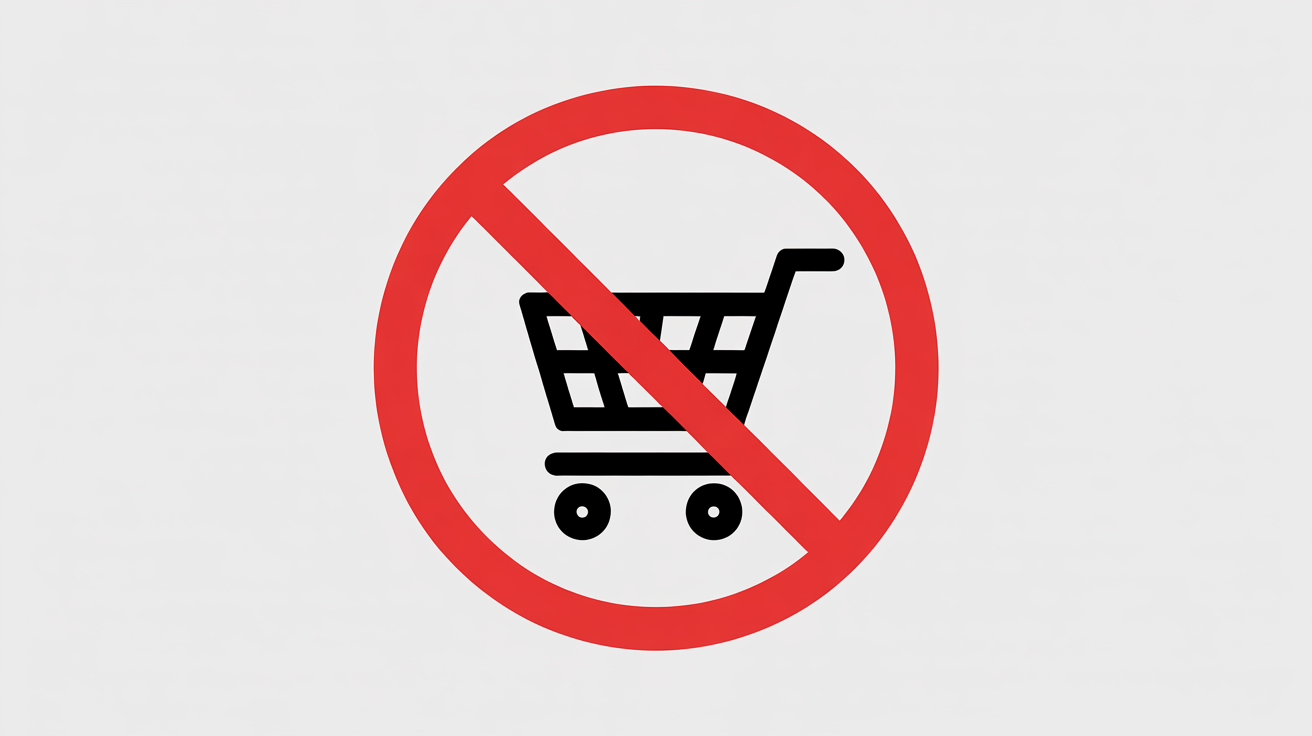You Had Them at ‘Buy Now.’ You Lost Them at Checkout
You’ve set up an amazing event. Your marketing partner has run a stellar campaign. Your audience is revved up and excited to attend. The event site is getting tons of visits. But for some reason, tickets aren’t selling! That’s exactly what happened to a well-known, highly respected food and beverage event that Wild Iris Marketing recently worked with.
This event was a high-end, one-night experience with tickets priced at over $400 per person. The marketing campaign worked beautifully. Ads and social posts generated buzz, engagement, and thousands of clicks from people eager to attend. Everything was set up for success! Until customers hit the “Buy Now” button, anyway.
The Bad Experience
Once visitors clicked the buy link, they were sent to an external ticketing platform managed by the venue rented for the event. There, what should have been a simple, easy purchase turned into a confusing and frustrating ordeal for potential attendees.
First, the system required visitors to create an account and submit email verification just to make a purchase. That’s an instant barrier; especially for high-dollar events, where buyers expect convenience and professionalism.
But the process didn’t end there. The ticketing system also:
- Tried to upsell costly event insurance – not from the event organizers, but from the ticketing platform itself.
- Pushed a donation to the venue’s non-profit, which was automatically selected unless the buyer opted out.
- Repeated the insurance upsell, pre-checked again unless the buyer noticed and unchecked it.
By this point, many potential customers felt uneasy. Instead of feeling exclusive and inviting, the experience felt manipulative. But some visitors persevered!
Unfortunately, even those who continued found another pain point: once they entered all their information, going through the unreasonable arduous process, the system required them to open a verification email to complete their payment! For some, that email never arrived. For others, it went straight to spam. The result? Numerous attendees who thought they’d completed their purchase simply… didn’t.
The Missing Data
From a marketing perspective, the campaign metrics were great. Click-through rates were high, cost-per-click was low, and ads performed well across every channel utilized. Despite this, conversions were abysmal.
The problem wasn’t the marketing; the problem was the handoff to the ticketing platform. Once customers left the event website and entered the venue’s ticketing system, the event organizers and our team lost all visibility into what happened next.
The venue’s ticketing platform didn’t allow for analytics tracking codes, abandoned cart recovery, or conversion tracking of any kind. That meant social media platforms, newsletters, and display ads couldn’t optimize targeting based on completed purchases. Our retargeting options were limited to people who clicked the “Buy Tickets” button; whether they finished the purchase or not!
Without analytics, we couldn’t learn anything to improve advertising. Without transparency, the event organizers couldn’t see where or why customers were dropping off. Without the ability to fix anything, the campaign’s initially strong performance meant nothing.
The Hidden Cost
User experience (UX) professionals will tell you that every extra click, form field, or unexpected upsell adds friction, and friction is a pain point that kills conversions. Customers were already sold. They wanted to go. But every unnecessary barrier gave them another chance to abandon the process or change their mind.
In this case, those barriers cost more than just sales. They also cost trust.
Some customers were angry that a supposedly premium event tried to trick them into expensive insurance and surprise donations. Others were confused about whether their payment had gone through. Many just gave up entirely. All this negative experience happened after the marketing had done its job getting people to click the buy button.
This is the hidden cost of a bad checkout process: it not only hurts immediate revenue, it damages long-term perception. People will remember how a brand made them feel, especially when they felt frustrated or deceived.
How Should it Work?
A high-end event should deliver a high-end digital experience. Here’s what would have turned this campaign into a success:
- Guest checkout: No forced account creation. Let people buy quickly and easily.
- Transparent options: Offer insurance or donations as clear, optional add-ons, not automatic checkboxes.
- Reliable completion: Keep all payment steps on as few screens as possible, one is ideal. Definitely no extra verification emails that can get lost in spam folders or ignored.
- Analytics access: Allow event organizers to install their own tracking codes so they can measure real conversions.
- Retargeting capability: Enable cart recovery or retargeting ads based on those who didn’t complete checkout.
- Pre-launch testing: Always walk through your own checkout process from start to finish before you launch ads!
Had these fundamentals been in place, the event would have easily sold out, and the marketing data could have helped future campaigns to be event more efficient and productive.
A Lesson Learned Too Late
It’s easy to assume your partners have everything handled. Many event organizers, restaurants, and venues reuse the same systems year after year without considering that platforms get updated and change. In this case, the organizers had previously worked with the venue but didn’t know the ticketing system had been updated with new friction points, hidden upsells, and restricted analytics.
This was only discovered about a week before the event, when it was too late to make meaningful changes. The marketing team had done their job beautifully, but the customer experience broke at the most critical moment.
The lesson is simple: your customer’s journey doesn’t end at your website. If you send them to a partner for checkout, reservations, or booking, that system becomes part of your brand experience. And if it’s slow, confusing, or feels deceitful, customers will blame you, not the vendor.
Take a Walk in Your Customer’s Shoes
Before any major campaign goes live, test your customer’s journey from start to finish. Try it on different devices. Check how emails are delivered. Make sure analytics and retargeting tools are correct. If you find something confusing, your customers will too.
Marketing can get people excited, but only a smooth checkout will close the sale. Every click after “Buy Now” should make your customer feel more confident and excited, not less.
Need help making sure your customers can finish their journey?
At Wild Iris Marketing, we don’t just drive traffic, we can make sure it gets to its destination. From UX audits to conversion optimization and analytics setup, we help businesses create seamless customer journeys that convert clicks into customers. Get in touch today to make sure your marketing delivers customers that can make it from their cart to the final checkout.


